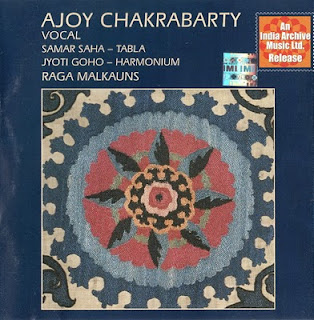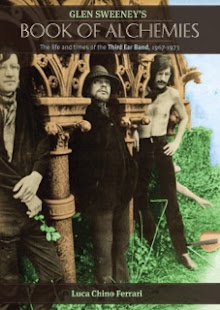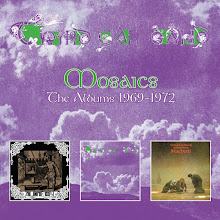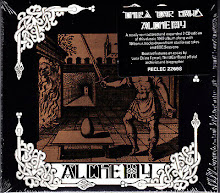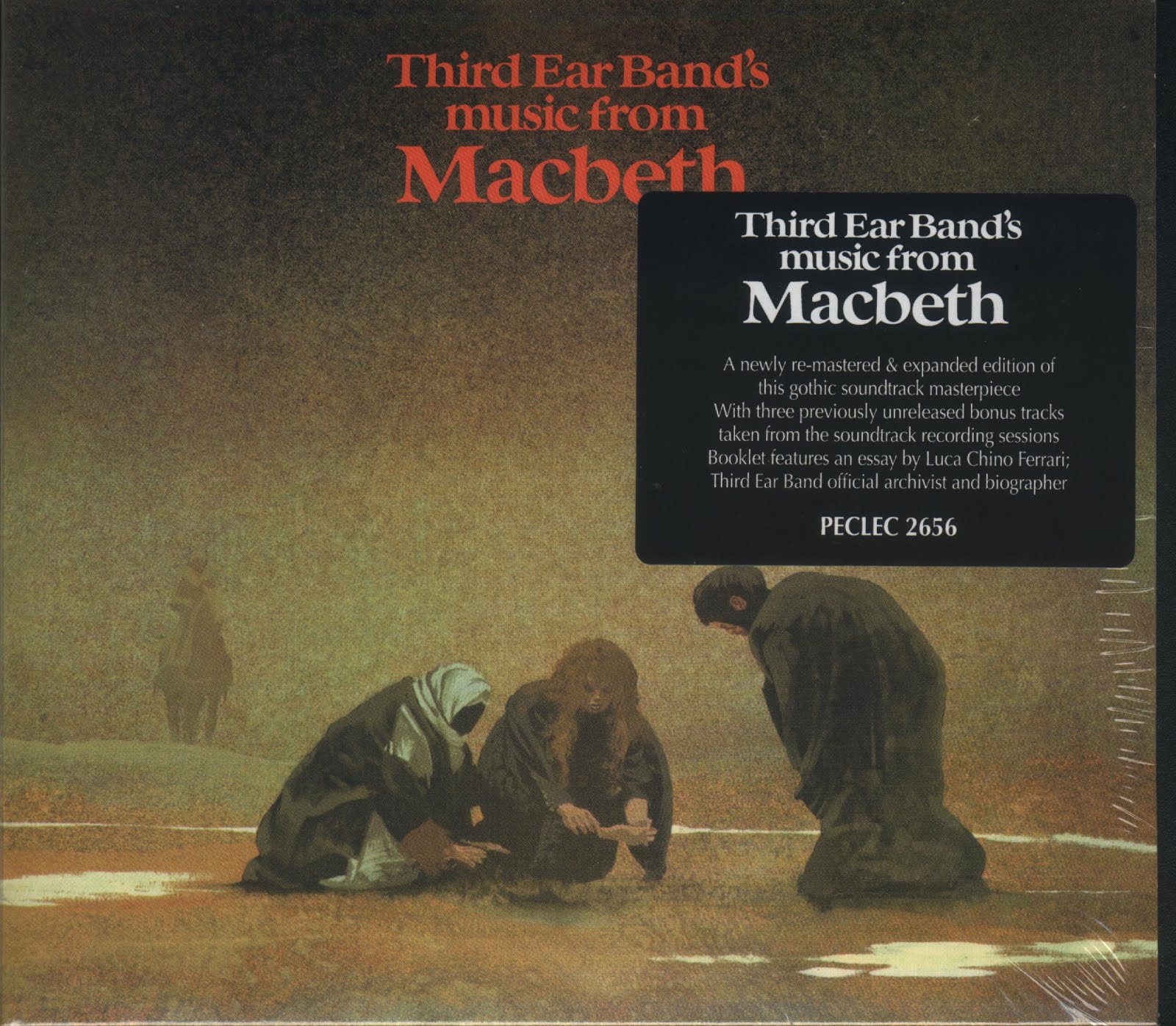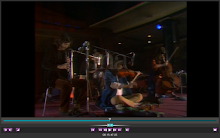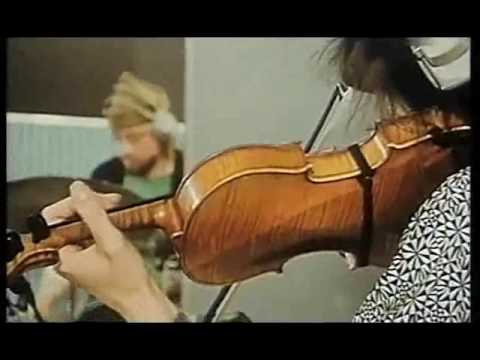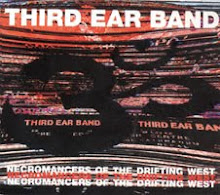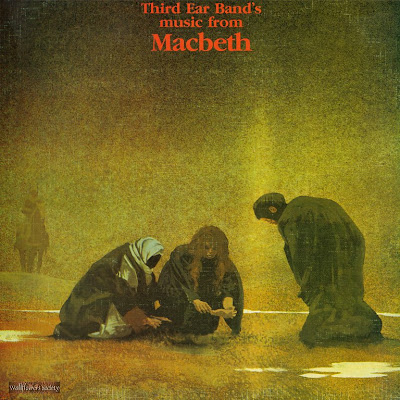November 30, 2010
An interview with Glen Sweeney on an Italian book published in 2004.
Italian musician and journalist Pierluigi Castellano has dedicated to the Third Ear Band an interview in a book edited in 2004 by publisher DeriveApprodi (http://www.deriveapprodi.org/estesa.php?id=157) titled "Le sorgenti del suono. Trenta incontri con musicisti straordinari" ("The sources of sound. 30 meetings with extraordinary musicians" - pages 192, € 13.00).
Among the others, original interviews with 'monsters' as Terry Riley, John Cage, Philip Glass, Uri Cane, Alice Coltrane... to investigate the origins of their sound.
As the editor states in the preface, the aim of this book is "to detect the freedom of choice inside and against the limits imposed by present conditions. Suggesting an idea of musical expression deprived of gerarchies, with processes of contamination taken even from scientific disciplines, and restating the power of collision between subversive power of art and his reduction to the logic of a controlled communication".
no©2010 Luca Ferrari
November 25, 2010
Elektric Third Ear Band: "Raga of the Wind" (1991).
"Sonora" is been a very interesting magazine edited by Materiali Sonori during the '90's: interviews, essays, photos about "intelligent music", as the label defined it. With great musicians as Frank Zappa, Erik Satie, Michael Nyman, Philip Glass an obvious space was dedicated to the Third Ear Band, just in those days one of the groups produced by MaSo.
 An exclusive aspect of the magazine was the CD included, with music of groups managed by the label and other underground bands. On issue 2, distributed at the beginning of 1991, on the CD was published "Raga of the Wind", recorded by the Elektric Third Ear Band - a new Glen Sweeney's project involved Mick Carter, Neil Black and old friend Barry Pilcher (from the Hydrogen Jukebox).
An exclusive aspect of the magazine was the CD included, with music of groups managed by the label and other underground bands. On issue 2, distributed at the beginning of 1991, on the CD was published "Raga of the Wind", recorded by the Elektric Third Ear Band - a new Glen Sweeney's project involved Mick Carter, Neil Black and old friend Barry Pilcher (from the Hydrogen Jukebox).
After "Magic Music", Glen intended to record a new album for Materiali Sonori with this line-up but then never happened and the new album (titled "Brain Waves" and published by MaSo in 1993) was recorded with Lyn Dobson in place of Pilcher.
This is the only one unrealised track officially recorded with that line-up (another track, "Song of Gaia" is still unrealised) - not one of my favourite ever, indeed - but an important document of that particular phase of TEB's history.
 |
| Original flyer made by Glen Sweeney |
ABOUT THE TRACK
title: "Raga of the Wind" (5:55)composed by Glen Sweeney
produced by Mick Carter
performed by:
Glen Sweeney - percussions,
customised mrdangas
Mick Carter - Ibanez midi guitar
Neil Black - Zeta midi electric violin
Barry Pilcher - Yamaha WX7 midi wind synthesizer
recorded by Mick Carter at Alchemical Studios (London).
Now you can download and listen to this track at:
Anyway, you can buy the magazine (in Italian/English, with the CD included) at: http://www.matson.it/html/specialeditions.asp
no©2010 Luca Ferrari
November 20, 2010
Feeding the starving: the "Magic" never realised demo of the Thirds (1989)...
 |
| TEB in Bergamo, January 1989. |
On next July, when the band come to Italy for a concert in Vinci (read at http://ghettoraga.blogspot.com/2010/02/third-ear-band-last-photo-session-vinci.html), due to her job as a teacher in the school, Smith was replaced by Allen Samuel.
Anyway, the new line-up never went into a studio and the original "Magic" demo was shelved and never realised (infact the album, published later as "Magic Music" by Materiali Sonori, was recorded by the new TEB line-up with Neil Black, some new different titles and a bonus live track).
 |
| The original tape written by Glen Sweeney. |
Actually this rare studio recording, just circulated in the TEB entourage as a demo tape (Glen gave me a copy of it just to listen to...), is an incredible document of the potential power of (original 3/4) TEB 19 years later, as a semi-acoustic group.
Listen to these rough incredible tracks being indulgent about technical quality and try to imagine which kind of music this fabulous line-up could play!
"Magic" demo tape
1. "Reading the runes" (7:.09)
2. "Exorcism" (8:51)
3. "Behind the pyramids" (7:42)
4. "New Age Raga" (12:06)
5. "Witches Dance" (7:15)
note:
1. same title on "Magic Music", just longer (on the album is 5:48)
2. titled "Necromancy"(8:52) on "Magic Music"
3. same title on "Magic Music", but shorter (7:16)
4. titled "Sun Ra Raga" (12:01) on "Magic Music"
5. titled "Solstice Song" (7:03) on "Magic Music"
no©2010 Luca Ferrari
November 17, 2010
Ursula Pank (nee Smith) played also on an old rare Peter Bellamy's composition...
 |
| Peter Bellamy |
In the wide Peter Bellamy's (1944-1991) discography, a little peculiar place has the "Maritime England Suite", a 40 minutes composition based on songs of the sea from the Saxons to the 19th century, Kipling, traditionals and anon/Bellamy.
It was produced in 1982 for the BBC for a proposed radio broadcast titled ‘We have fed our
Sea’ and performed by a trio comprising the same Bellamy on voice, Dolly Collins on piano and our Ursula Pank (nee Smith) on cello.
The composition, never realised as a proper album, existed as a private cassette-only edition with a photocopied cover. As TEB's fan-&-musician Sedayne states, who recommends us this gem, "copies of which
are scarce (and those extant are fading fast...) but the music is of a perfect
and golden charm".
"This is a basic transfer of a very old unbranded
cassette copy as sold by Peter Bellamy at his gigs. No attempt has been made to
clean it up at source (no Dolby certainly!) or otherwise enhance it on the
computer other than to fix a patricularly messy edit & fade it out at the
end of Part Two which cuts out on the cassette. One hopes the masters are
extant and that plans are afoot to release them officially, but as life is
generally too short for the awaiting of such miracles, enjoy this in all its
lo-fi glory".
Note that in 1999 three tracks have been included on a 3CDs Bellamy's 57 tracks anthology titled "Wake the Vaulted Echoes", edited by Free Reed Records (http://www.free-reed.co.uk/frtcd14), now out of stock.
The tracklist:
(Part One)
1. "Song of the Red War Boat" (Kipling)
2. "Sir Patrick Spens" (Trad)
3. "Sir Andrew Barton" (Anon)
4. "The Spanish Armada" (Anon)
5. "The Zealous Puritan" (Anon)
6. "The Dutch in the Medway" (Kipling)
(Part Two)
1. "We Have Fed Our Sea For a Thousand Years" (Kipling)
2. "Andrew Rose & the Cruel Ship's Captain" (trad.)
3. "The Death of Nelson" (trad.)
4. "The British Man of War" (trad.)
5. "The China Clipper" (Tardiff)
All settings by Peter Bellamy. Arranged by Dolly
Collins.
So, waiting for an official full-lenght edition (?!), you can download this pleasant suite at:
(part one) http://rapidshare.com/files/431251959/Maritime_England_Suite_-_Part_1.mp3
(part two) http://rapidshare.com/files/431481791/Maritime_England_Suite_-_Part_2.mp3
(part two) http://rapidshare.com/files/431481791/Maritime_England_Suite_-_Part_2.mp3
no©2010 Luca Ferrari
November 12, 2010
COB's 1971 first album (with Ursula Smith on cello) available in the Net for free download....
About the few collaborations of Ursula Smith, one of the best known is that with the C.O.B. (Clives' Original Band) first album published in 1971 as "Spirit of Love" (CBS 69010) where she played cello on three tracks ("When he came home" - listen to it at http://www.youtube.com/watch?v=x3409H0xFfg, "Sweet Slavery" and "Serpent's Kiss").
"It's no surprise that this album can be recommended to Incredible String fans, as it features singer-guitarist Clive Palmer, who was part of the ISB on their debut LP", writes Richie Unterberger. "It's less expected, however, that the album can also be recommended to British folk-rock fans who might not necessarily be enamored of the Incredible String Band. It's low-key, almost to the point of being subdued, and melodic British folk with that quasi-psychedelic mystical tinge characteristic of ISB. Yet the vocals are more tuneful and soothing - if, undeniably, less adventurous. The arrangements are nicely varied, too, something else that sets this apart from the standard British folk record. The embellishments from John Bidwell's dulcitar, Indian hand organ, and recorder - as well as occasional cello, haunting vocal harmonies, and the clever a cappella trio vocals of "Wade in the Water" - play a large part in the record's modest triumph".
 Personnel:
Personnel:
Clive Palmer - banjo, vocals, arranger, guitar (12 string), guitar
Ursula Smith - cello
Mickey "Tickey" Bennett - organ, percussion, voices, vocals, arranger, washboard
Michael Bennett - percussion, keyboards, vocals
Gillian McPherson - voices
John Bidwell - organ, banjo, keyboards, arranger, vocals, voices, Indian organ, dulcitone, recorder
Steve Bonnett - bass, guitar
Ralph McTell - guitar, drums, producer
Tracks:
1. "Spirit Of Love" 2. "Music Of The Ages" 3. "Soft Touches Of Love" 4. "Banjo Land" 5. "Scranky Black Farmer" 6. "Evening Air" 7. "Serpent's Kiss" 8. "Sweet Slavery" 9. "When He Came Home"
Ursula Smith - cello
Mickey "Tickey" Bennett - organ, percussion, voices, vocals, arranger, washboard
Michael Bennett - percussion, keyboards, vocals
Gillian McPherson - voices
John Bidwell - organ, banjo, keyboards, arranger, vocals, voices, Indian organ, dulcitone, recorder
Steve Bonnett - bass, guitar
Ralph McTell - guitar, drums, producer
Tracks:
1. "Spirit Of Love" 2. "Music Of The Ages" 3. "Soft Touches Of Love" 4. "Banjo Land" 5. "Scranky Black Farmer" 6. "Evening Air" 7. "Serpent's Kiss" 8. "Sweet Slavery" 9. "When He Came Home"
 |
| COB original line-up |
The record, reissued on CD by Lady Eleanore label (catalog # 100LE 201), is also available for free download at http://rapidshare.com/#!download|306l35|92423185|COB_Spirit_of_Love.zip|6216.
no©2010 Luca Ferrari
November 09, 2010
Shipping forecast.
Ladies & Gentlemen,
two new sections in this Archive for Third Ear Band's (lazy) addicts.
two new sections in this Archive for Third Ear Band's (lazy) addicts.
On the column at right you can find a section with TEB rare tracks ("Raga n. 1", "Raga in D", "Ghoo"...) for a more rapid free downloading.
Below of it, you can find another new section (titled "The Raga bums") with rare Indian ragas (in MP3 format) for free downloading - great executions by monsters as Lalgudy G. Jayaraman, Ajoy Chakrabarty, Ali Akbar Kan or Ustad Zakir Hussain...
So enjoy the great Indian tradition that inspired the Thirds in a period when the Indian music in Western was just the sitar played in a Beatles' album...
no©2010 Luca Ferrari
November 05, 2010
A "TEB" magical formula... for the here & now (?!).
“Cooking and distillation takes place in the cauldron; below, blazes the roaming flame. Afore goes the White Tiger leading the way; following comes the Grey Dragon.
The fluttering Chu-niao [Scarlet Bird] flies the five colours. Encountering ensnaring nets, it is helplessly and immovably pressed down, and cries with pathos like a child after its mother.
Willy-nilly it is put into the cauldron of hot fluid to the detriment of its feathers. Before half of time has passed, Dragons appear with rapidity and in great number.
The five dazzling colours change incessantly. Turbulently boils the fluid in the ting [furnace]. One after another they appear to form an array as irregular as dog’s teeth. Stalagmites which are like midwinter icicles are spat out horizontally and vertically. Rocky heights of no apparent regularity make their appearance, supporting one another.
When yin [negativeness] and yang [positiveness] are properly matched, tranquility prevails.”
This is a magical formula taken from the old Tsan-tung-chi, a Chinese alchemical text written in about the 2nd or 3rd century A.D. (it is quoted in the famous "Alchemy" by E. G. Holmyard, published in 1957) as a description of the embroidered pattern on a mandarin's robe.
 A more recent quotation of it is included on another alchemical book edited by Neil Powell (titled "Alchemy, the Ancient Science", printed in 1976). He explaines: "One of the main differences was that, in place of the four elements defined by Aristotle, the Chinese designated five: water, fire, wood, metal, and earth. In addition, they recognized the principles of yang and yin instead of Jabir's theory of sulfur and mercury. According to the Book of Tao, written by the sage Lao-tzu about 550 B.C., all the energy of the Universe can be divided into the two forms of yang - which is active, masculine, fiery - and yin - which is passive, feminine, and watery. Immortality is a masculine quality, and gold and jade, which are almost pure yang, preserve bodies from corruption. "If there is gold and jade in the nine apertures of the corpse, it will preserve the body from putrefaction," wrote the alchemist Ko Hung in the 4th century A.D. Princes and lords were buried with boxes of jade for this reason. The Chinese also related the Macrocosm of the Universe to the human body in the Microcosm of the world. For example, they identified the heart with the essence of fire, the liver with the essence of wood, the lungs with the essence of metal, the stomach with the essence of earth, and the kidneys with the essence of water. Like Western alchemy, Chinese alchemy is filled with symbols" (you can get a free download of this book in the Net at http://ebooksx.com/Alchemy-The-Ancient-Science-Neil-Powell_94844.html).
A more recent quotation of it is included on another alchemical book edited by Neil Powell (titled "Alchemy, the Ancient Science", printed in 1976). He explaines: "One of the main differences was that, in place of the four elements defined by Aristotle, the Chinese designated five: water, fire, wood, metal, and earth. In addition, they recognized the principles of yang and yin instead of Jabir's theory of sulfur and mercury. According to the Book of Tao, written by the sage Lao-tzu about 550 B.C., all the energy of the Universe can be divided into the two forms of yang - which is active, masculine, fiery - and yin - which is passive, feminine, and watery. Immortality is a masculine quality, and gold and jade, which are almost pure yang, preserve bodies from corruption. "If there is gold and jade in the nine apertures of the corpse, it will preserve the body from putrefaction," wrote the alchemist Ko Hung in the 4th century A.D. Princes and lords were buried with boxes of jade for this reason. The Chinese also related the Macrocosm of the Universe to the human body in the Microcosm of the world. For example, they identified the heart with the essence of fire, the liver with the essence of wood, the lungs with the essence of metal, the stomach with the essence of earth, and the kidneys with the essence of water. Like Western alchemy, Chinese alchemy is filled with symbols" (you can get a free download of this book in the Net at http://ebooksx.com/Alchemy-The-Ancient-Science-Neil-Powell_94844.html).
 A more recent quotation of it is included on another alchemical book edited by Neil Powell (titled "Alchemy, the Ancient Science", printed in 1976). He explaines: "One of the main differences was that, in place of the four elements defined by Aristotle, the Chinese designated five: water, fire, wood, metal, and earth. In addition, they recognized the principles of yang and yin instead of Jabir's theory of sulfur and mercury. According to the Book of Tao, written by the sage Lao-tzu about 550 B.C., all the energy of the Universe can be divided into the two forms of yang - which is active, masculine, fiery - and yin - which is passive, feminine, and watery. Immortality is a masculine quality, and gold and jade, which are almost pure yang, preserve bodies from corruption. "If there is gold and jade in the nine apertures of the corpse, it will preserve the body from putrefaction," wrote the alchemist Ko Hung in the 4th century A.D. Princes and lords were buried with boxes of jade for this reason. The Chinese also related the Macrocosm of the Universe to the human body in the Microcosm of the world. For example, they identified the heart with the essence of fire, the liver with the essence of wood, the lungs with the essence of metal, the stomach with the essence of earth, and the kidneys with the essence of water. Like Western alchemy, Chinese alchemy is filled with symbols" (you can get a free download of this book in the Net at http://ebooksx.com/Alchemy-The-Ancient-Science-Neil-Powell_94844.html).
A more recent quotation of it is included on another alchemical book edited by Neil Powell (titled "Alchemy, the Ancient Science", printed in 1976). He explaines: "One of the main differences was that, in place of the four elements defined by Aristotle, the Chinese designated five: water, fire, wood, metal, and earth. In addition, they recognized the principles of yang and yin instead of Jabir's theory of sulfur and mercury. According to the Book of Tao, written by the sage Lao-tzu about 550 B.C., all the energy of the Universe can be divided into the two forms of yang - which is active, masculine, fiery - and yin - which is passive, feminine, and watery. Immortality is a masculine quality, and gold and jade, which are almost pure yang, preserve bodies from corruption. "If there is gold and jade in the nine apertures of the corpse, it will preserve the body from putrefaction," wrote the alchemist Ko Hung in the 4th century A.D. Princes and lords were buried with boxes of jade for this reason. The Chinese also related the Macrocosm of the Universe to the human body in the Microcosm of the world. For example, they identified the heart with the essence of fire, the liver with the essence of wood, the lungs with the essence of metal, the stomach with the essence of earth, and the kidneys with the essence of water. Like Western alchemy, Chinese alchemy is filled with symbols" (you can get a free download of this book in the Net at http://ebooksx.com/Alchemy-The-Ancient-Science-Neil-Powell_94844.html).
The same formula is printed on a beautiful TEB poster for the legendary concert played at the Purcell Room (London) on April 21th, 1969 by the great line-up with Glen Sweeney, Paul Minns, Ben Cartland and Richard Coff with some of the tracks of the forthcoming "Alchemy" album. Interesting to note the time scheduled for the playing (7.30-10.30 p.m., three hours of "alchemical" music...?!).
Maybe anyone has got a recording of the concert...?
no©2010 Luca Ferrari
Subscribe to:
Posts (Atom)






